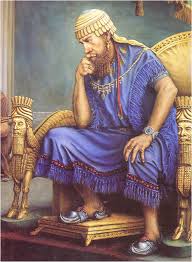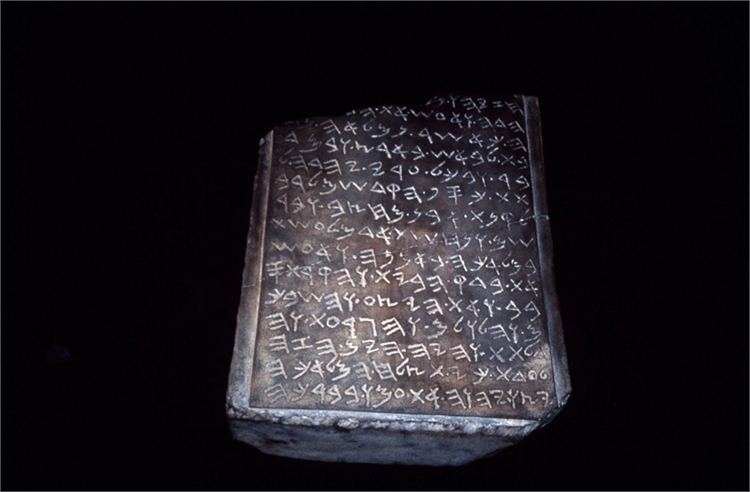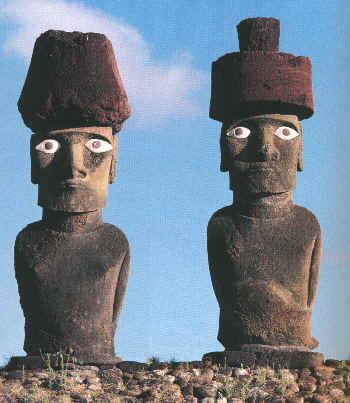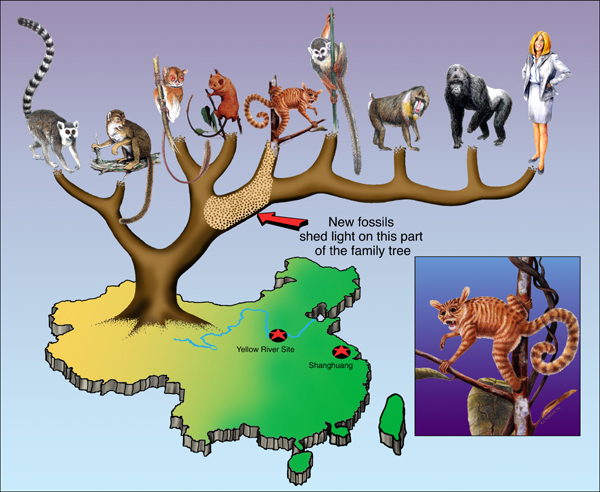WHO CONTROLS THE PAST, CONTROLS THE FUTURE. WHO CONTROLS THE PRESENT, CONTROLS THE PAST. George Orwell.
woensdag 30 november 2011
maandag 28 november 2011
zaterdag 26 november 2011
THE PERSIAN EMPIRE
The Persian Empire was one of the most mysterious civilizations in the ancient world. Persia became an empire under the Cyrus the Great, who created a policy of religious and cultural tolerance that became the hallmark of Persian rule. Engineering feats include an innovative system of water management; a cross-continent paved roadway stretching 1500 miles; a canal linking the Nile to the Red Sea; and the creation of one of the Seven Wonders of the World, the Mausoleum of Maussollos.
http://youtu.be/kFXfMfE43jI

THE TOMB OF CYRUS THE GREAT
Cyrus the Great (ca.600 - 529 BCE) was a towering figure in the history of mankind. As the "father of the Iranian nation", he was the first world leader to be referred to as "The Great". Cyrus founded the first world empire - and the second Iranian dynastic empire (the Achaemenids) - after defeating the Median dynasty and uniting the Medes with the other major Iranian tribe, the Persians.

http://youtu.be/kFXfMfE43jI

THE TOMB OF CYRUS THE GREAT
Cyrus the Great (ca.600 - 529 BCE) was a towering figure in the history of mankind. As the "father of the Iranian nation", he was the first world leader to be referred to as "The Great". Cyrus founded the first world empire - and the second Iranian dynastic empire (the Achaemenids) - after defeating the Median dynasty and uniting the Medes with the other major Iranian tribe, the Persians.

THE FALL OF ASSYRIA
http://youtu.be/hW9X3P0lbZk

Nebuchadrezzar II (also Nebuchadnezzar; reigned 605-562 B.C.E.), is the best-known ruler of Babylonia in the Chaldean Dynasty. He is famous for his conquests of Judah, his monumental building projects within his capital of Babylon, his role in the biblical books of Daniel and Jeremiah, and the construction of the Hanging Gardens of Babylon.
He is traditionally called "Nebuchadrezzar the Great" and was referred to by the prophet Jeremiah as "God's servant." However, his destruction of the Temple and his forcing the citizens of Judah into exile caused his vilification in other parts of the Bible and Judaic tradition. This has caused him to be interpreted very differently by Judeo-Christians in the west compared to contemporary Iraq, where he is glorified as a great historic leader.

Nebuchadrezzar II (also Nebuchadnezzar; reigned 605-562 B.C.E.), is the best-known ruler of Babylonia in the Chaldean Dynasty. He is famous for his conquests of Judah, his monumental building projects within his capital of Babylon, his role in the biblical books of Daniel and Jeremiah, and the construction of the Hanging Gardens of Babylon.
He is traditionally called "Nebuchadrezzar the Great" and was referred to by the prophet Jeremiah as "God's servant." However, his destruction of the Temple and his forcing the citizens of Judah into exile caused his vilification in other parts of the Bible and Judaic tradition. This has caused him to be interpreted very differently by Judeo-Christians in the west compared to contemporary Iraq, where he is glorified as a great historic leader.

KING SOLOMONS TABLET
http://youtu.be/8xlBI8ENkqk

2001. A clandestine meeting of leading Israeli archaeologists are shown a remarkable artefact. It's a stone tablet, apparently from 1,000BC. The writing on its face describes repairs to the temple of King Solomon. It is the first archaeological evidence ever found of this legendary building. The relic caused a sensation. But this was only just the start. For authentication, the tablet was taken to the Geological Survey of Israel. Here, after a battery of tests, including radiocarbon dating, scientists officially pronounced the stone to be genuine.


2001. A clandestine meeting of leading Israeli archaeologists are shown a remarkable artefact. It's a stone tablet, apparently from 1,000BC. The writing on its face describes repairs to the temple of King Solomon. It is the first archaeological evidence ever found of this legendary building. The relic caused a sensation. But this was only just the start. For authentication, the tablet was taken to the Geological Survey of Israel. Here, after a battery of tests, including radiocarbon dating, scientists officially pronounced the stone to be genuine.

THE BABYLON MYSTERY
http://youtu.be/JQIWDPTIYGk
Babylon [from the Akkadian bāb-ilû, meaning "Gateway of God"] was a city of ancient Mesopotamia, the ruins of which can be found in present-day Al Hillah, Babil Province, Iraq, about 85 kilometers (55 mi) south of Baghdad, in the fertile Mesopotamian plain between the Tigris and Euphrates rivers.

The Eastern Canaan Amorites conquered and settled in Babylon, making it their capital in 1959 BC. From there, the old Babylonian Kingdom was born. The Kingdom then expanded into a mighty Mesopotamian Empire under the rule of its famous king: Hammurabi, sometime in the 18th century BC.
At that time, Babylon flourished and became the cultural and economical capital of the entire Fertile Crescent. It also became the seat of the renown Code of Hammurabi, the first code of law in Human history.

Babylon [from the Akkadian bāb-ilû, meaning "Gateway of God"] was a city of ancient Mesopotamia, the ruins of which can be found in present-day Al Hillah, Babil Province, Iraq, about 85 kilometers (55 mi) south of Baghdad, in the fertile Mesopotamian plain between the Tigris and Euphrates rivers.

The Eastern Canaan Amorites conquered and settled in Babylon, making it their capital in 1959 BC. From there, the old Babylonian Kingdom was born. The Kingdom then expanded into a mighty Mesopotamian Empire under the rule of its famous king: Hammurabi, sometime in the 18th century BC.
At that time, Babylon flourished and became the cultural and economical capital of the entire Fertile Crescent. It also became the seat of the renown Code of Hammurabi, the first code of law in Human history.

vrijdag 25 november 2011
donderdag 24 november 2011
woensdag 23 november 2011
zondag 20 november 2011
vrijdag 18 november 2011
maandag 14 november 2011
vrijdag 11 november 2011
woensdag 9 november 2011
THE TOMB OF ALEXANDER THE GREAT
http://youtu.be/tdiuLZIvAR8
Cleopatra VII (Elizabeth Taylor) tells Julius Ceasar (Rex Harrison) about Alexander the Great being Greek. Despite what others may say, the ancient Macedonians were Greek.

Souvaltzi is an archaeologist who claims that found the tomb of Alexander the Great, and how the greek government paused her project. The subject is controvertial among scientists who think that she has illusions and others who support her....only time will tell and of course with a trully unbiased and logical greek government.
VIDEO: http://youtu.be/MBZ2eUq83gs

For all his power in life, Alexander the Great could not control the fate of his body after death.
VIDEO: http://youtu.be/OboQ5pyWmsk
Alexander the Greats tomb was in public display for almost 600 years and was visited by many important personalities such as the Roman emperors Augustus and Julius Ceasar, as well as common tourists. Although Alexander was laid to rest in a golden sarcophagus, King Ptolemy IX replaced it by one made of glass, as he melted down the gold one in order to strike emergency gold coinage.
 The tomb was eventually closed to the public by Septimus Severus (early third century AD) out of concern for its safety on account of the hoards of tourists who came to visit the site. By the 4th century, the location of Alexander's tomb was lost. The oblivion lasted until the 19th century, when the Egyptian astronomer Mahmud el-Falaki attempted to locate the tomb. According to El-Falaki the tomb would have been located under the mosque of Prophet Daniel, where he was not allowed to dig. But most archaeologist are convinced that he was buried in Alexandria, the city that he founded in Egypt.
The tomb was eventually closed to the public by Septimus Severus (early third century AD) out of concern for its safety on account of the hoards of tourists who came to visit the site. By the 4th century, the location of Alexander's tomb was lost. The oblivion lasted until the 19th century, when the Egyptian astronomer Mahmud el-Falaki attempted to locate the tomb. According to El-Falaki the tomb would have been located under the mosque of Prophet Daniel, where he was not allowed to dig. But most archaeologist are convinced that he was buried in Alexandria, the city that he founded in Egypt.
Others have tried to find the tomb, but to no avail! In 1737 a Danish sea captain by the name of Norden visited the city and tried but failed to locate the tomb. James Bruce came in 1768, but his efforts were also in vain. At the end of the 18th century, Sestrini visited the city looking for the Alexander the Great's tomb, but he was shown the Attarine mosque.
 Until today no one can be sure where the tomb of one of the greatest men who changed history lies, but besides Alexandria, there have been claims that he rests in Asia, Macedonia, and the Siwa Oasis. There has even been a wild allegation that Alexander the Great could be buried "down under" in Broome in Western Australia!
Until today no one can be sure where the tomb of one of the greatest men who changed history lies, but besides Alexandria, there have been claims that he rests in Asia, Macedonia, and the Siwa Oasis. There has even been a wild allegation that Alexander the Great could be buried "down under" in Broome in Western Australia!

Cleopatra VII (Elizabeth Taylor) tells Julius Ceasar (Rex Harrison) about Alexander the Great being Greek. Despite what others may say, the ancient Macedonians were Greek.

Souvaltzi is an archaeologist who claims that found the tomb of Alexander the Great, and how the greek government paused her project. The subject is controvertial among scientists who think that she has illusions and others who support her....only time will tell and of course with a trully unbiased and logical greek government.
VIDEO: http://youtu.be/MBZ2eUq83gs

For all his power in life, Alexander the Great could not control the fate of his body after death.
VIDEO: http://youtu.be/OboQ5pyWmsk
Alexander the Greats tomb was in public display for almost 600 years and was visited by many important personalities such as the Roman emperors Augustus and Julius Ceasar, as well as common tourists. Although Alexander was laid to rest in a golden sarcophagus, King Ptolemy IX replaced it by one made of glass, as he melted down the gold one in order to strike emergency gold coinage.
 The tomb was eventually closed to the public by Septimus Severus (early third century AD) out of concern for its safety on account of the hoards of tourists who came to visit the site. By the 4th century, the location of Alexander's tomb was lost. The oblivion lasted until the 19th century, when the Egyptian astronomer Mahmud el-Falaki attempted to locate the tomb. According to El-Falaki the tomb would have been located under the mosque of Prophet Daniel, where he was not allowed to dig. But most archaeologist are convinced that he was buried in Alexandria, the city that he founded in Egypt.
The tomb was eventually closed to the public by Septimus Severus (early third century AD) out of concern for its safety on account of the hoards of tourists who came to visit the site. By the 4th century, the location of Alexander's tomb was lost. The oblivion lasted until the 19th century, when the Egyptian astronomer Mahmud el-Falaki attempted to locate the tomb. According to El-Falaki the tomb would have been located under the mosque of Prophet Daniel, where he was not allowed to dig. But most archaeologist are convinced that he was buried in Alexandria, the city that he founded in Egypt.Others have tried to find the tomb, but to no avail! In 1737 a Danish sea captain by the name of Norden visited the city and tried but failed to locate the tomb. James Bruce came in 1768, but his efforts were also in vain. At the end of the 18th century, Sestrini visited the city looking for the Alexander the Great's tomb, but he was shown the Attarine mosque.
 Until today no one can be sure where the tomb of one of the greatest men who changed history lies, but besides Alexandria, there have been claims that he rests in Asia, Macedonia, and the Siwa Oasis. There has even been a wild allegation that Alexander the Great could be buried "down under" in Broome in Western Australia!
Until today no one can be sure where the tomb of one of the greatest men who changed history lies, but besides Alexandria, there have been claims that he rests in Asia, Macedonia, and the Siwa Oasis. There has even been a wild allegation that Alexander the Great could be buried "down under" in Broome in Western Australia!
maandag 7 november 2011
THE AMBER ROOM

The Amber Room (In English sometimes known as Amber Chamber, Russian: Янтарная комната Yantarnaya komnata, German: Bernsteinzimmer) in the Catherine Palace of Tsarskoye Selo near Saint Petersburg is a complete chamber decoration of amber panels backed with gold leaf and mirrors. Due to its singular beauty, it was sometimes dubbed the "Eighth Wonder of the World".
Before it was lost, the original Amber Room represented a joint effort of German and Russian craftsmen. Construction of the Amber Room began in 1701 to 1709 in Prussia. The room was designed by German baroque sculptor Andreas Schlüter and constructed by the Danish amber craftsman Gottfried Wolfram and remained at Charlottenburg Palace until 1716 when it was given by Prussian king Friedrich Wilhelm I to his then ally, Tsar Peter the Great of the Russian Empire. In Russia it was expanded and after several renovations, it covered more than 55 square meters and contained over six tons of amber. The Amber Room was looted during World War II by Nazi Germany and brought to Königsberg. Knowledge of its whereabouts was lost in the chaos at the end of the war.
In 1979 efforts began to rebuild the Amber room at Tsarskoye Selo. In 2003, after decades of work by Russian craftsmen, financed by donations from Germany, the reconstructed Amber Room was inaugurated in the Catherine Palace in Saint Petersburg, Russia.
VIDEO: http://youtu.be/ZaeoXWpwmDQ

vrijdag 4 november 2011
HITLER'S ESCAPE
According the official public record, Adolf Hitler committed suicide in his underground bunker as allied troops stormed Berlin at the end of World War II. But no one actually saw him die. No body was ever produced. No photographs were ever taken. Some believe Hitler managed to escape, and for years there were sightings of the former dictator in many parts of the world. Then, in the 1990s the Russians revealed secret evidence taken from Hitler's bunker decades earlier that they said proved he had died there. Among the evidence is a piece of skull. MysteryQuest obtained access to this evidence for testing and the results are startling.
http://youtu.be/iCyfiG7aTB4

http://youtu.be/iCyfiG7aTB4
donderdag 3 november 2011
Abonneren op:
Posts (Atom)













